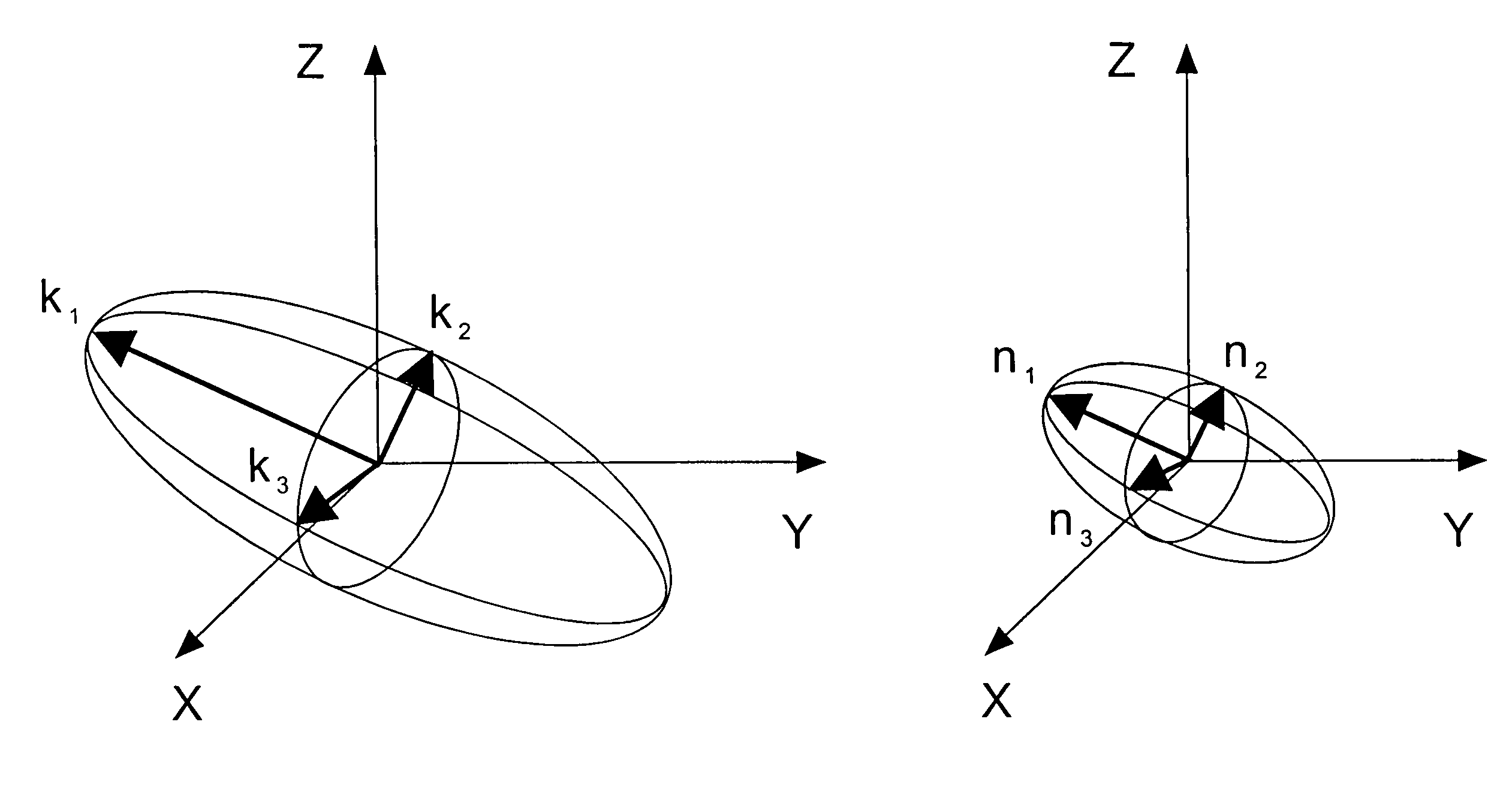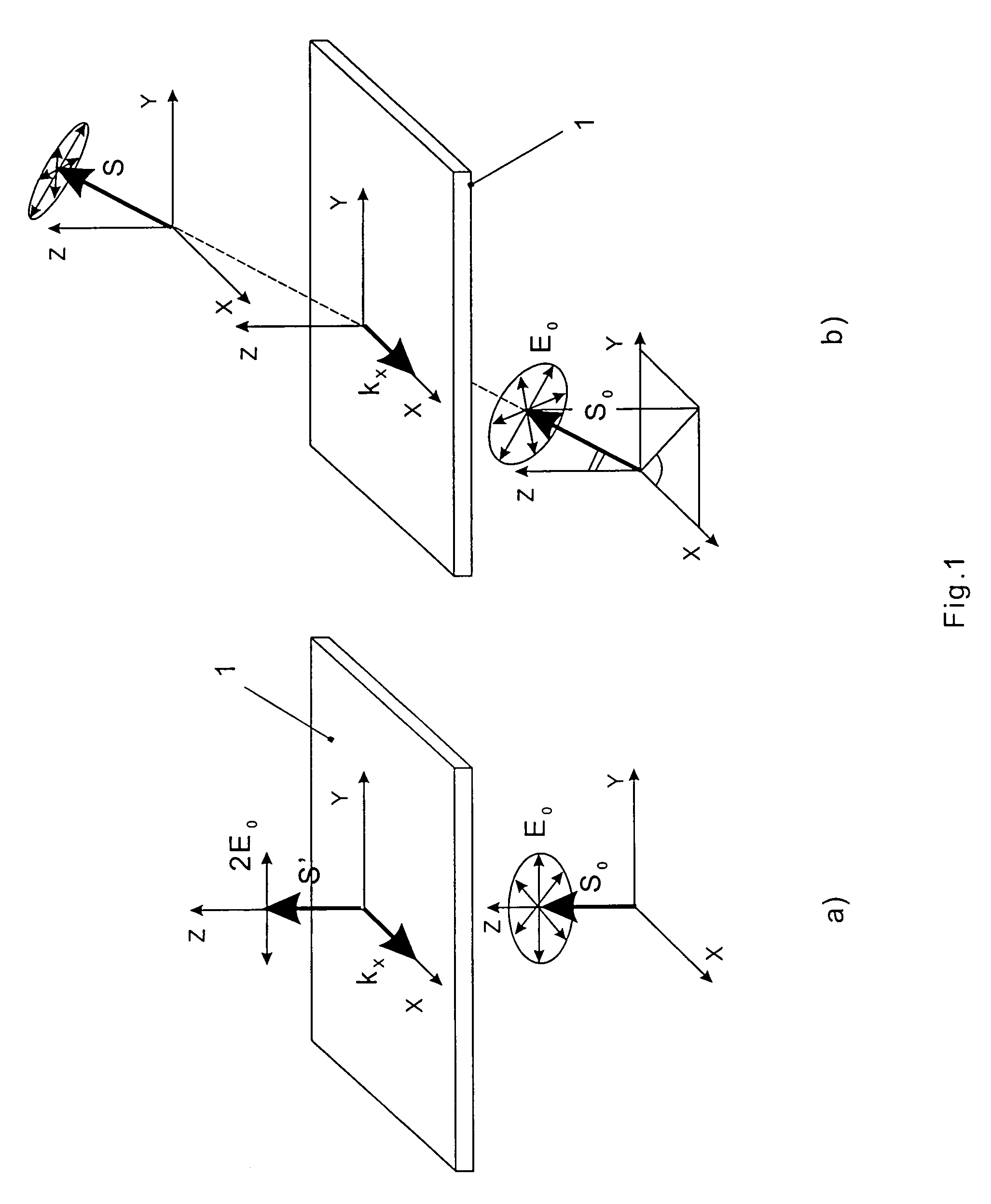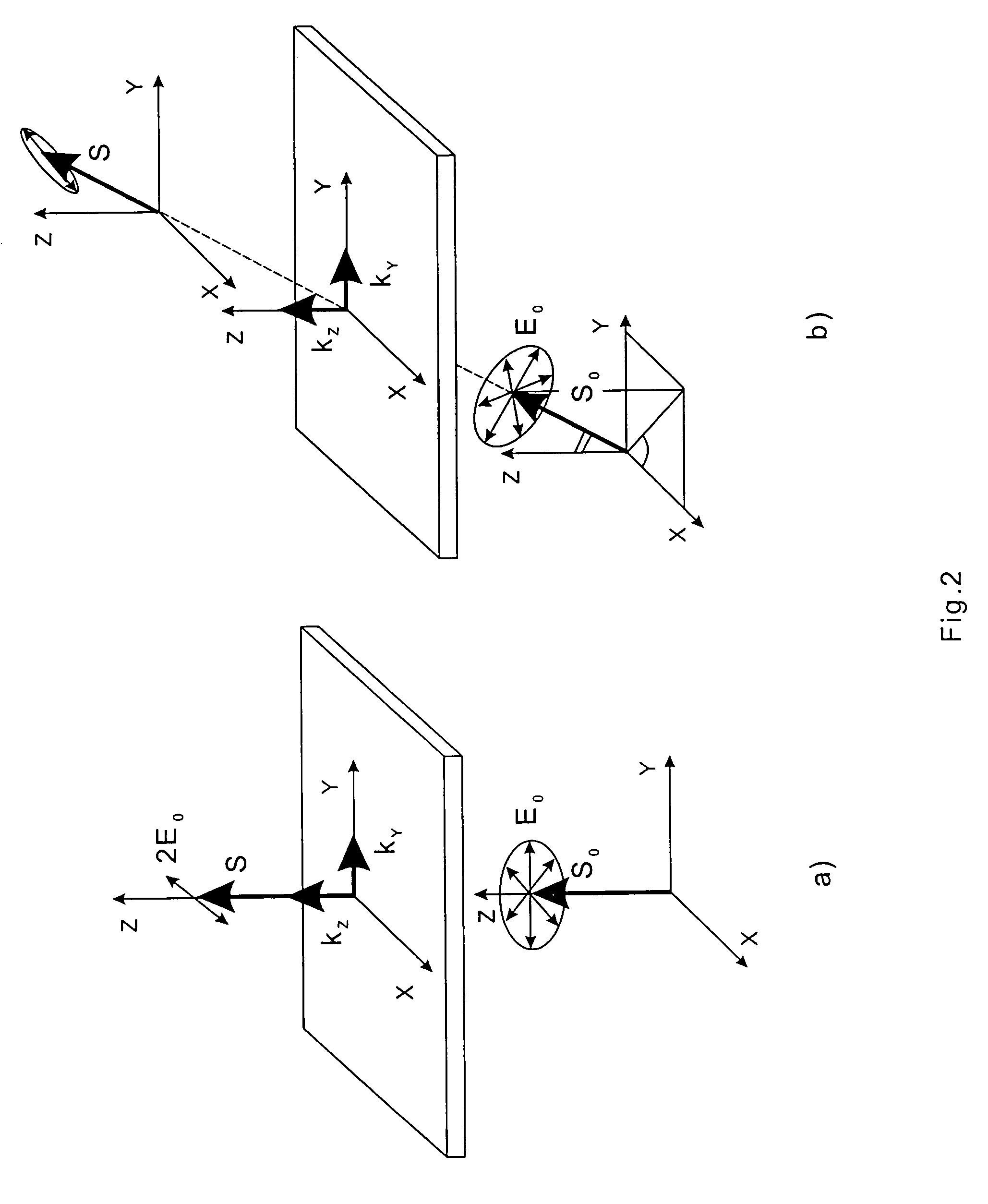Dichroic polarizer and material
a dichroic polarizer and dichroic polarizer technology, applied in the field of thermoresistant and light-resistant dichroic polarizers, can solve the problems of low angular characteristics, limited applicability, and high light transmittance of oriented polarizers,
- Summary
- Abstract
- Description
- Claims
- Application Information
AI Technical Summary
Benefits of technology
Problems solved by technology
Method used
Image
Examples
Embodiment Construction
[0019]The present invention is now described in detail and with reference to the figures.
[0020]Optical properties of polarizers are characterized by the complex anisotropic refractive index Ni,j=√{square root over (εi,j·μii,j)}, where ei,j and μi,j are tensors of dielectric and magnetic transmittance. In the system of coordinates, in which the tensor of the dielectric transmittance is diagonal, Nm=nm−i·km, where nm is the refractive index, which characterizes the speed of light in the matter and the plane of polarization of which is parallel to the axis m, km is an imaginary part, which characterizes absorption of light with the plane of polarization along axis m and related to the absorption coefficient as follows:
Km=2π·km / λ,
where λ is the light wavelength. Angular dependence of the real and imaginary parts of the refractive index may be described with ellipsoids.
[0021]Iodine polarizers are characterized by the axial symmetry of components of Nm. Here major axis of the ellipsoid co...
PUM
| Property | Measurement | Unit |
|---|---|---|
| azimuth angle | aaaaa | aaaaa |
| distance | aaaaa | aaaaa |
| speed | aaaaa | aaaaa |
Abstract
Description
Claims
Application Information
 Login to View More
Login to View More - R&D
- Intellectual Property
- Life Sciences
- Materials
- Tech Scout
- Unparalleled Data Quality
- Higher Quality Content
- 60% Fewer Hallucinations
Browse by: Latest US Patents, China's latest patents, Technical Efficacy Thesaurus, Application Domain, Technology Topic, Popular Technical Reports.
© 2025 PatSnap. All rights reserved.Legal|Privacy policy|Modern Slavery Act Transparency Statement|Sitemap|About US| Contact US: help@patsnap.com



